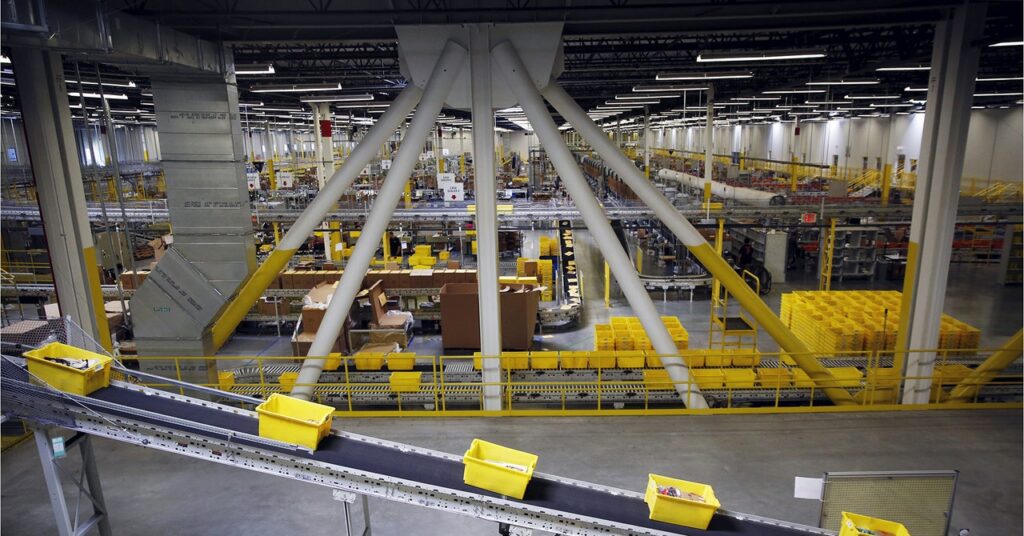Depending upon your outlook, Black Friday is either a time-honored US shopping holiday or the miserable nadir of American consumer culture. Whichever lens you choose to view it through, there’s no denying that Black Friday is huge. Adobe’s Digital Index shows that last year’s Black Friday holiday set a record, with consumers spending $2.4 billion online, a 24 percent increase from 2013. This year, according to estimates, that trend line is still going up: eMarketer projects a 5.7 percent gain in retail sales, with e-commerce continuing to grow in the double digits, as it’s done for several years.
Of all the retailers hoping to capitalize on this trend, Amazon is by far the most well-positioned. This week, on the heels of launching a Black Friday online store well ahead of the actual day, the company said that its holiday deals would start rolling out as early as tomorrow—a full week ahead of Black Friday, the day after Thanksgiving here in the US. The company had eight days of Black Friday deals last year, too, but this year it’s giving the promotion an even bigger push: new deals will be added as often as every five minutes on Amazon’s dedicated Black Friday page, twice the rate of last year. In 2014, Amazon offered three “coveted” deals of the day starting on Thanksgiving at midnight, as well as three more on Black Friday; this year, it’s offering ten at the stroke of midnight on both days.
Plus, Amazon is giving mobile shopping a huge boost. The company says it will offer a slew of app-only deals and two-hour delivery on certain items through the holiday. Customers can mark the deals they’re most excited about using a feature called “Watch a Deal,” which pushes a notification to their smartphones once the offer is live.
Taken together, Amazon seems to be saying it knows all about your impending Black Friday misery—and that it can really and truly relieve you of it. “Customers can truly sit back and relax with their family and friends this holiday season knowing that they will be notified as soon as the products they’ve had their eye on are about to go on sale,” Steve Shure, Amazon’s vice president of consumer marketing, said in a statement.
But Amazon is onto something bigger. It’s a pivotal time in the company’s history, which makes scrutinizing Amazon’s Black Friday strategy even more interesting. After enduring years of razor-thin profits—and even some losses—as the company poured money into building out distribution centers and logistics, it finally looks to be reaping the benefits. Don’t be surprised if 2015 is the tipping point where the world’s largest online retailer makes a lasting mark on the shopping holiday.
“You can’t generate that same kind of excitement if you’re trying to do this in-store,” says Ben Schachter, a Wall Street analyst at Macquarie, who specializes in Amazon. “Consumers aren’t going to be there every day for eight days. That’s not to say they can’t try to replicate customer success online, but Amazon is dominating online.”
Amazon’s Winning Strategy
Let’s not forget what’s on the backend here. Apart from Amazon’s formidable infrastructure—now comprised of about 173 facilities worldwide, by analysts’ calculations—the company has learned from lessons of the past and created 100,000 temporary jobs to help it meet its holiday retail goals this season. That extra assistance should also help the company deliver purchased gifts to recipients reliably, something it had trouble with after a late surge in holiday sales last year.
It’s not even the first time Amazon has been able to spur sales without an official holiday. Earlier in the summer, to celebrate its 20th year anniversary, Amazon hosted Prime Day, an online sales event that it said would eclipse all other Black Friday promotions it had held in the past. In spite of shoppers being disappointed at what they thought was a lot of junk posted on the site, Amazon’s sales soared. According to the company, it did see more orders—398 of them per second, in fact—than any other Black Friday in its history.
The fact that the company has this ability to capture attention dovetails nicely with consumer holiday behavior. According to eMarketer’s research, year-round gift buying has now made the core holiday shopping season in November to December less important. About 48 percent of US shoppers had finished the majority of their 2014 shopping by Cyber Monday, up from 40 percent in 2013, according to a post-holiday survey by Ipsos MediaCT. And one-fourth of shoppers had already begun to shop for the holidays even before Halloween, the survey said.
“If consumers think that they’re getting some good deals, and some special deals even several days before Thanksgiving, I think Amazon could change some of their shopping habits in a way that very few other retailers could do,” says eMarketer retail analyst Yoram Wurmser. “I think they’re really trying to change the landscape with things like Prime Day and these eight days of Black Friday.” According to Wurmser, Amazon is still far ahead of its other online competitors, such as the discount-oriented startup Jet.com or the electronics-focused Newegg. Other retail giants like Walmart and Target, meanwhile, have been disappointing analysts and struggling to keep pace with Amazon’s hyper-efficiency when it comes to shorter delivery times and rock-bottom costs.
Source: here
